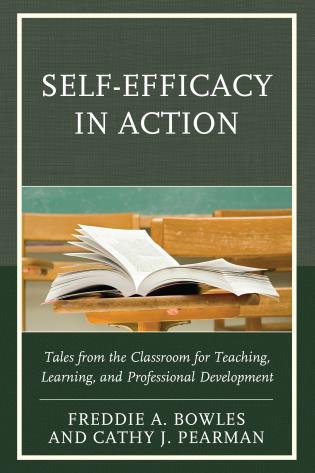
Freddie Bowles has been involved with both the national and state organizations of the Association of Teacher Educators for several years. Now, she is president of the state organization. Several years ago, the president of the national organization appointed her to a commission to study self-efficacy in education.
Bowles, a University of Arkansas associate professor of foreign language education, co-edited a new book with chapters written by the commission members to share what they found. Cathy Pearman, who earned a doctorate in curriculum and instruction from the U of A and now is head of the Department of Reading Foundations and Technology at Missouri State University, co-edited the book.
"Self-efficacy is the ability of the individual to overcome challenges with persistence and passion with the idea that you will be successful," Bowles said. "If you don't have self-efficacy, you tend to give up, when challenged you think something will be too hard."
Terrell M. Peace, president of the national Association of Teacher Educators, in 2010 formed the commission with the charge of investigating and conducting research related to self-efficacy in teaching, learning and schooling.
"A natural outgrowth of reflections of this research evolved into a series of in-depth discussions and conference presentations conducted by commission members on how self-efficacy is manifested in teachers and how it is enacted in everyday teaching situations," according to the preface of Self-Efficacy in Action: Tales from the Classroom for Teaching, Learning, and Professional Development, published this year by Rowman and Littlefield.
The commission envisioned classrooms where teachers are confident decision-makers, risk takers and change agents for the benefit of their students' learning.
Ten chapters align with standards developed by the Interstate Teacher Assessment and Support Consortium and published by the Council of Chief State School Officers. They describe behaviors, thoughts and processes that self-efficacious teachers use in teaching and learning scenarios. Each chapter starts with a vignette illustrating situations that arise in the lives of educators and ends with guiding questions, additional resources and a list of references.
Jennifer Beasley formerly taught in the childhood education program and now directs the Office of Teacher Education in the College of Education and Health Professions. She wrote a chapter titled "On the Culture of Collaboration: A Tool for Teacher Self-Efficacy."
Contacts
Heidi S. Wells, director of communications
College of Education and Health Professions
479-575-3138, heidisw@uark.edu